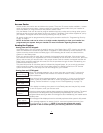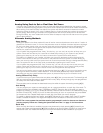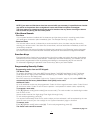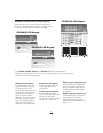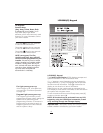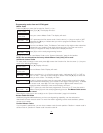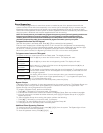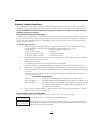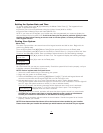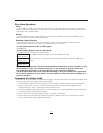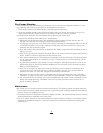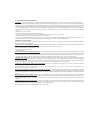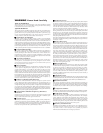
16
Fire Escape Planning
There is often very little time between the detection of a fire and the time it becomes deadly. It is thus
very important that a family escape plan be developed and rehearsed.
1. Every family member should participate in developing the escape plan.
2. Study the possible escape routes from each location within the house. Since many fires occur at
night, special attention should be given to the escape routes from sleeping quarters.
3. Escape from a bedroom must be possible without opening the interior door.
Consider the following when making your escape plans:
• Make sure that all perimeter doors and windows are easily opened. Ensure that they are not
painted shut, and that their locking mechanisms operate smoothly.
• If opening or using the exit is too difficult for children, the elderly or handicapped, plans for rescue
should be developed. This includes making sure that those who are to perform the rescue can
promptly hear the fire warning signal.
• If the exit is above the ground level, an approved fire ladder or rope should be provided as well as
training in its use.
• Exits on the ground level should be kept clear. Be sure to remove snow from exterior patio doors in
winter; outdoor furniture or equipment should not block exits.
• Each person should know of a predetermined assembly point where everyone can be accounted
for i.e.: across the street or at a neighbour's house. Once everyone is out of the building, call the
Fire Department.
• A good plan emphasizes quick escape. Do not investigate or attempt to fight the fire, and do not
gather belongings or pets as this wastes valuable time. Once outside, do not re-enter the house.
Wait for the fire department.
• Write the fire escape plan down and rehearse it frequently so that should an emergency arise,
everyone will know what to do. Revise the plan as conditions change, such as the number of
people in the home, or if there are changes to the building's construction.
• Make sure your fire warning system is operational by conducting weekly tests (see “Fire Alarm
Operation” on page 14). If you are unsure about system operation, contact your installing dealer.
• We recommend that you contact your local fire department and request further information on fire
safety and escape planning. If available, have your local fire prevention officer conduct an in-
house fire safety inspection.
Maintenance
With normal use, the system requires minimum maintenance. The following points should be observed.
1.Do not wash the security station with a wet cloth. Light dusting with a slightly moistened cloth should
remove normal accumulations of dust.
2.The battery/ bell test is designed to determine battery condition. We recommended, however, that the
stand-by batteries be replaced every three years.
3.For other system devices such as smoke detectors, passive infrared, ultrasonic or microwave motion
detectors or glassbreak detectors, consult the respective manufacturer’s literature for testing and
maintenance.



